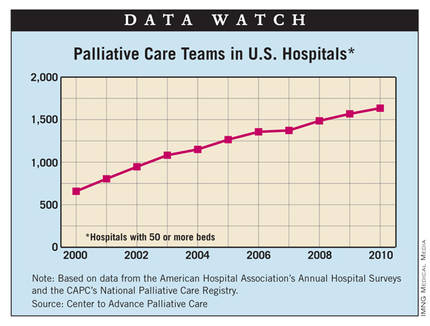
Many organizations and agencies offer various health services. There are many services that can be provided, such as administrative and community-based clinics or medical care. Although these services may differ in how they are delivered, all have one goal: to improve the health of those who require them. Telehealth services can be used for certain health services.
Administrative services
Administrative services in health care are the work done behind the scenes to make sure health care programs are successful. This work results in improved outcomes and a healthier community. Administrators are not clinicians, but they coordinate staff, systems, and continuous improvements to keep health care services running smoothly. They ensure patients get the best care possible and also monitor quality outcomes.
Administrators must have the ability to create and execute strategic plans to ensure that organizations succeed. They must also communicate well with the public and employees. This requires positive attitude and good verbal communication skills. To increase their purchasing power, they can create networks with other organizations.

Medical care
Maintaining good health requires medical care. It is crucial that you seek the assistance of a health care provider promptly to ensure the best possible outcomes. Lack of health insurance may prevent some people from seeking treatment. Additionally, uninsured persons are more likely have poor health. Individuals also need public health insurance programs to be able to access and use healthcare.
Community-based clinics
The community-based clinics offer a range of services that are available to all members of the community. Often, they grant communities direct access to necessary resources and educate residents about their rights. They can also help communities overcome health inequities and become healthier. Inequity can lower a community's longevity by 20 to 30 year. Community-based health initiatives work to eliminate health disparities.
A key subsystem of an overall system of health is community-based services. As a result, they should be planned and managed carefully, so as to avoid gaps and inconsistencies. If they are not well planned and coordinated, chances of progress toward universal health coverage will be lost.
Telehealth
Telehealth offers many benefits. It is possible to receive care from remote locations. Patients can view their test results online, request prescription refills, or schedule office visits. They can also order testing supplies and medication online. Telehealth services allow patients to set reminders for when they should take their medication.

Telehealth services can be covered by Medicare in the United States. There are restrictions and conditions. First, a physician must hold a valid license in order to provide health care services in the particular state. The laws governing licensure in each state are different. It is important to familiarize yourself with the rules. The majority of states require physicians to be licensed in their own state. Some states, however, have reciprocity arrangements with neighboring countries.
Mobile vans
Mobile medical vans can provide many health services for people and communities. These vans come with the ability to offer services such a door-to–door consultation, mental counseling, health testing, and many other services. For instance, a medical van could provide assistance to people experiencing homelessness.
Some mobile health vans are free of charge and can travel to remote communities to provide medical services. These mobile vans have specialized equipment that can provide basic medical services on-site. These vans may be customized to meet specific community needs.
FAQ
What is the distinction between the health service and the health system?
Health systems can be more than just providing healthcare services. They cover all aspects of life, from education to employment to housing and social security.
Healthcare services focus on specific conditions like cancer, diabetes and mental illness.
They may also be used to refer to generalist primary-care services that are provided by community-based practitioners under the guidance of an NHS hospital Trust.
What about the role of the private sector?
In delivering healthcare, the private sector is vital. For example, it provides some of the equipment used in hospitals.
It also pays for some hospital staff. It makes sense that they should be involved in the management of the system.
There are however limitations to what they offer.
It is not always possible for private providers to compete with government services.
They shouldn't attempt to manage the entire system. This could result in a system that isn't cost-effective.
What are the three levels in health care facilities
General practice clinics are the first level. They provide basic medical services to patients who don't require hospital admission. They can also refer patients to other providers, if necessary. This includes nurse practitioners, general practitioners and midwives.
The second level of care is primary care centers, which provide outpatient services that include emergency care. These include hospitals, walk in clinics, urgent care centres, family planning clinics and sexual health clinics.
The third level includes secondary care centers that offer specialist services like eye surgery, orthopedic surgery and neurosurgery.
Statistics
- Price Increases, Aging Push Sector To 20 Percent Of Economy". (en.wikipedia.org)
- Healthcare Occupations PRINTER-FRIENDLY Employment in healthcare occupations is projected to grow 16 percent from 2020 to 2030, much faster than the average for all occupations, adding about 2.6 million new jobs. (bls.gov)
- The healthcare sector is one of the largest and most complex in the U.S. economy, accounting for 18% of gross domestic product (GDP) in 2020.1 (investopedia.com)
- Consuming over 10 percent of [3] (en.wikipedia.org)
- For instance, Chinese hospital charges tend toward 50% for drugs, another major percentage for equipment, and a small percentage for healthcare professional fees. (en.wikipedia.org)
External Links
How To
What are the 4 Health Systems
Healthcare is a complex network that includes hospitals, clinics and pharmaceutical companies as well as insurance providers, government agencies, public officials and other organizations.
The ultimate goal of the project was to create an infographic that would help people to better understand the US health system.
Here are some key points:
-
Annual healthcare spending amounts to $2 trillion, or 17% of GDP. That's more than twice the total defense budget!
-
Medical inflation reached 6.6% last year, higher than any other consumer category.
-
Americans spend an average of 9% on their health costs.
-
As of 2014, there were over 300 million uninsured Americans.
-
Although the Affordable Healthcare Act (ACA), was passed into law, implementation has not been completed. There are still significant gaps in coverage.
-
A majority believe that the ACA must be improved.
-
The US spends more money on healthcare than any other country in the world.
-
Affordable healthcare would lower the overall cost by $2.8 Trillion annually if everyone had it.
-
Medicare, Medicaid and private insurers pay 56% of healthcare expenses.
-
There are three main reasons people don't get insurance: not being able or able to pay it ($25 billion), not having the time ($16.4 billion) and not knowing about it ($14.7 trillion).
-
HMO (health care maintenance organization) is one type of plan. PPO (preferred provider organizational) is another.
-
Private insurance covers most services, including doctors, dentists, prescriptions, physical therapy, etc.
-
The public programs include hospitalization, outpatient surgery and nursing homes. They also cover long-term care and hospice care.
-
Medicare is a federal program providing senior citizens health coverage. It pays for hospital stays and skilled nursing facility stays.
-
Medicaid is a federal-state program that provides financial aid to low-income families and individuals who earn too little to be eligible for other benefits.